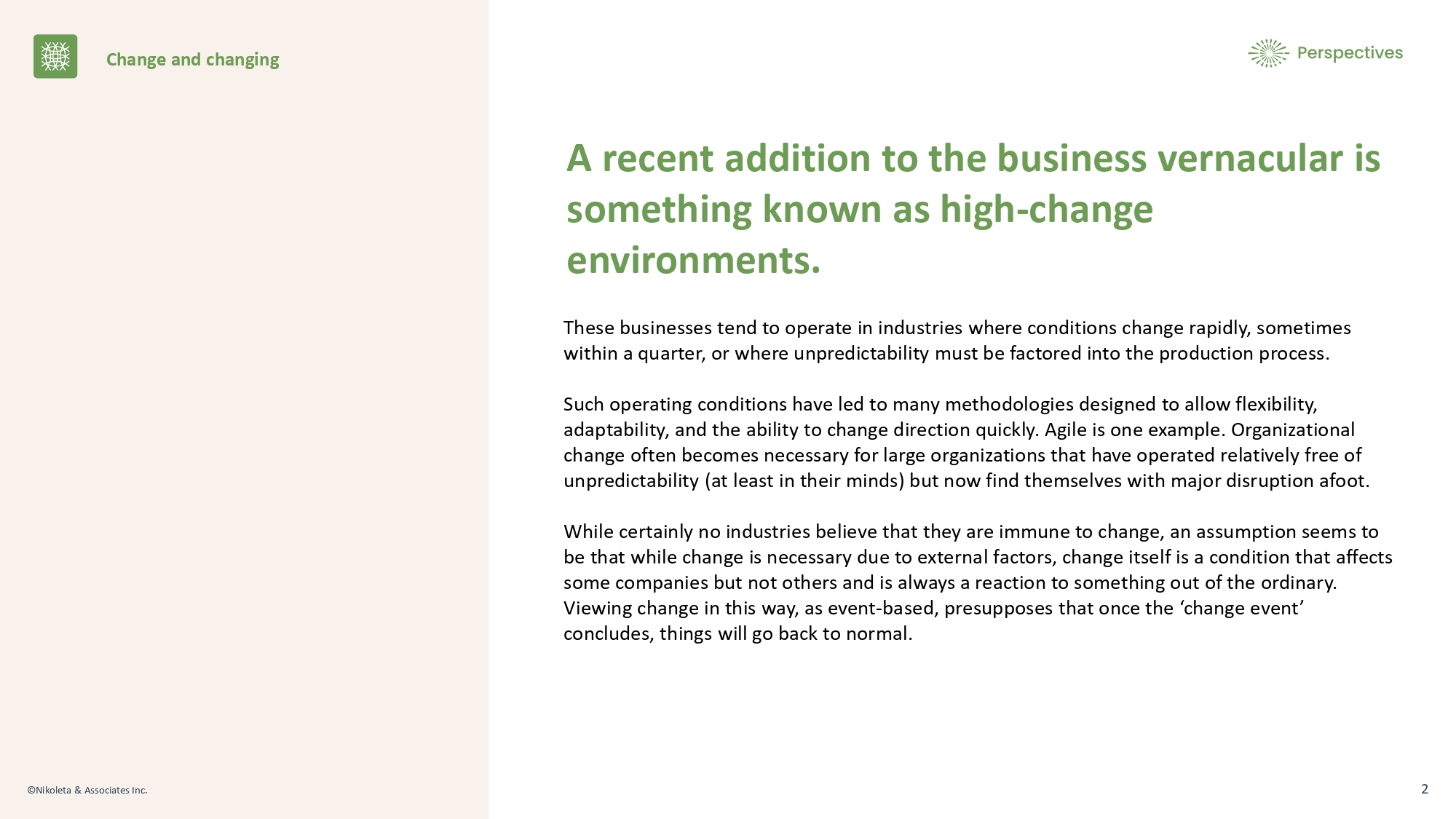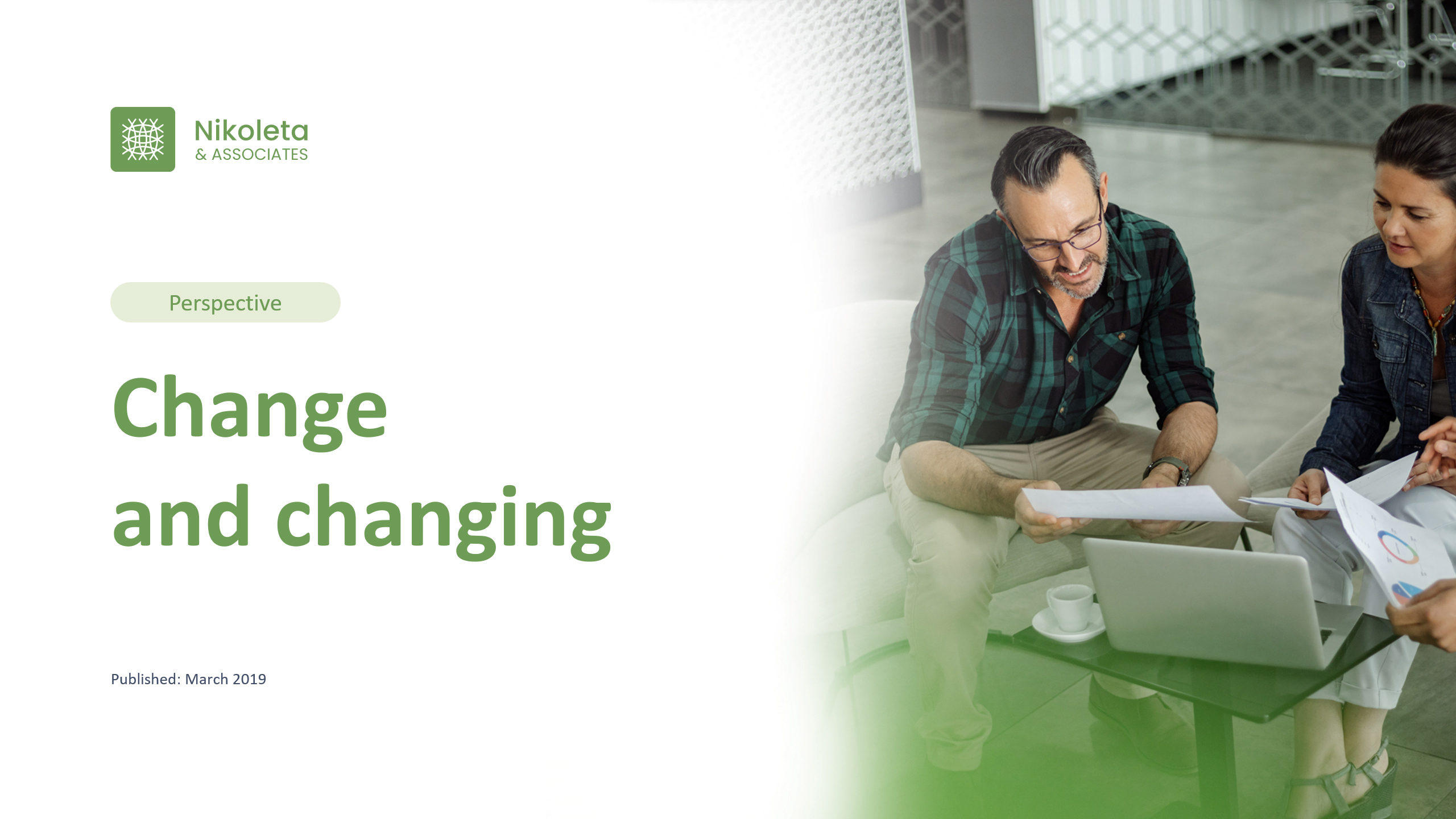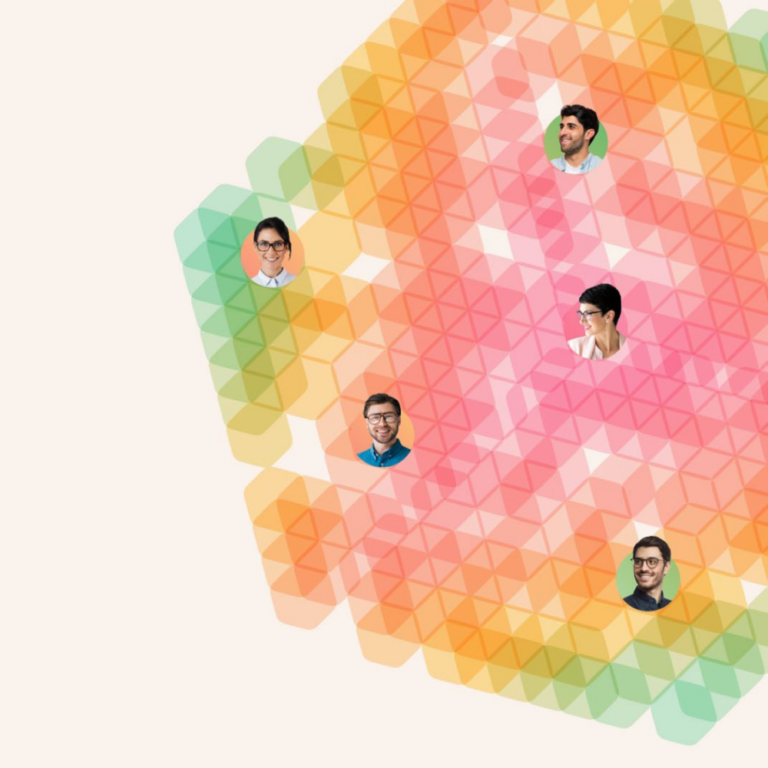Perspective
Change and changing


A recent addition to the business vernacular is something known as high-change environments.
These businesses tend to operate in industries where conditions change rapidly, sometimes within a quarter, or where unpredictability must be factored into the production process.
Such operating conditions have led to many methodologies designed to allow flexibility, adaptability, and the ability to change direction quickly. Agile is one example. Organizational change often becomes necessary for large organizations that have operated relatively free of unpredictability (at least in their minds) but now find themselves with major disruption afoot.
While certainly no industries believe that they are immune to change, an assumption seems to be that while change is necessary due to external factors, change itself is a condition that affects some companies but not others and is always a reaction to something out of the ordinary. Viewing change in this way, as event-based, presupposes that once the ‘change event’ concludes, things will go back to normal.
Change, however, is life, and in life, things never go back anywhere.
Everything always, always moves forward. Business, even though it often believes itself to be concerned with only certain elements of life such as profit, loss, competition, acquisition, etc., is wholly subject to the vicissitudes of change inherent in life. Outside of life, there is only an idea.
Our approach roots itself in the fundamental shift that occurs when you apply a simple usage transference between a noun and a verb. When we think in terms of change, for example change management or change resilience, we’re viewing change as a static entity. There is an assumption here, definitely unspoken but certainly real, that change has a beginning, a middle, and an end. It is viewed often as a finite project rather than as a constant, a way of being, something always in place and always at play.
Change, in this static form, lends itself well to methodologies and gives business leaders the impression that it can be contained and controlled, both within time and cost. When we shift to using “changing” rather than “change”, something quite marvelous occurs. We realize that everything is changing: our businesses and, most importantly, ourselves. Over the course of one working day, we are several different people: sometimes our ideal selves, sometimes not our ideal selves. Over the course of the working week, we sometimes learn things that change us qualitatively between Monday and Friday. Thus, our approach focuses squarely on the changing human at the core of all business.
What do we mean by this?
When we view business through this lens, leadership naturally becomes fundamental. Because if we’re going to view people the way they truly are, that is, always evolving and never the same way twice, who will be equipped to lead the organization? Traditional leadership skills must be augmented by other skills which historically have been considered less relevant, but will now underpin success.
These include self-awareness, the ability to collaborate, and the power to communicate, live and on the go, with full awareness of human dynamics. The ability to impart a strategy becomes less about setting direction and more about creating context. Clarifying and creating direction dynamically, in the moment, at the continual pace of change is the hallmark of a leader.















